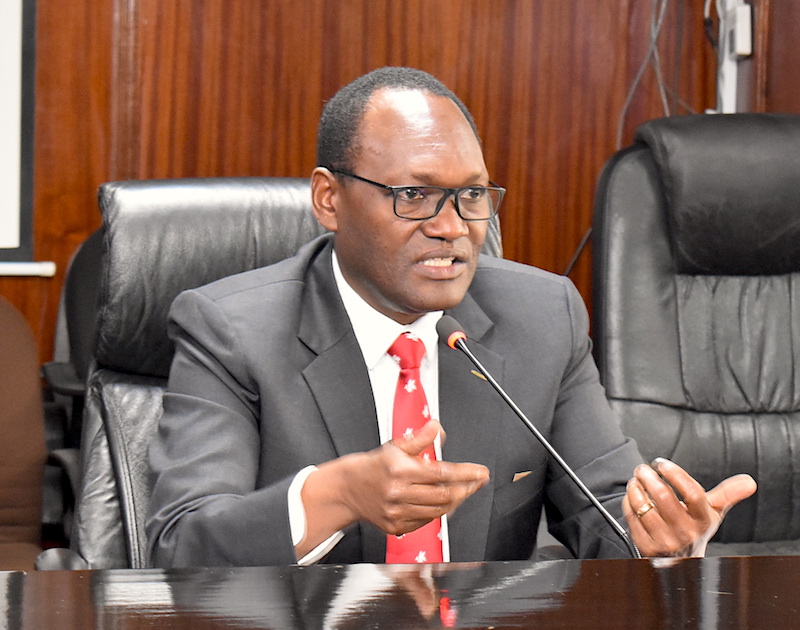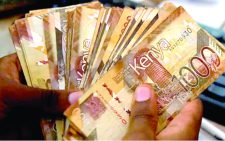Kenya received Ksh504.37B external loan disbursement against target of Ksh599.34B, Treasury reveals

The National Treasury and Economic Planning has released the Domestic Treasury Bills Auction Performance report.
In a statement on Friday, June 16, 2023, the Treasury the government received external loan disbursements amounting Ksh504.37 billion against a target of Ksh599.34 billion in the FY 2022/2023, registering a deficit of 94.97 billion.
However, the Treasury stated that the government is hopeful to get USD100M from a syndicate facility, which could then cover the deficit.
“An addition of USD 100 million may be disbursed during June 2023,” the statement read.
Treasury lenders
The statement also listed the sources of the disbursements which included the International Monetary Fund, syndicate facility and the World Bank.
The syndicate facility tops the list with the highest loan disbursement, followed by IMF and tailed by the World Bank. The syndicate facility disbursed a total of USD800B, IMF loaned Kenya a total of 82.73 in separate disbursements and the World Bank loaned USD1B. The latter disbursement was meant to support the budget.

External disbursements to the Government of Kenya during the current financial year are as follows:
i. The total cumulative external disbursements from project loans as at 12% June, 2023 stood at Kshs. 170.71 billion.
ii. During the month of September 2022 and December 2022, Kenya received Kshs. 27.81 billion and Kshs. 54.92 billion respectively from the International Monetary Fund (IMF).
iii. By 19″ May 2023, Kenya had received a disbursement of USD 800 million from syndicated facility. An addition of USD 100 million may be disbursed during June 2023 to bring the total syndicate facility to USD 900 million.
iv. On 30″ May 2023, Kenya received disbursement of one billion US dollars from the World Bank for budget support.
Treasury on repayment
According to the Treasury, the government has repaid a total of Ksh236.58 Billion of the total amount of external loans disbursed. The statement also stated that Kenya is yet to repay a total of 267.79 billion of the total foreign funding.
The ministry further explained that the net foreign financing is below what they had targeted.
“The principal repayments for FY 2022/23 amount to Kshs. 236.58 billion. Therefore, the Net Foreign Financing stood at Kshs. 267.79 billion against a target of Kshs. 362.76 billion,” the statement concluded.
The revelations follow the 2023/2024 budget reading by Treasury CS Njuguna Ndugu, who announced yesterday that Kenya’s public debt will increase due to maturing euro bond.
“The external debt service is projected to increase from Ksh242.1 billion (2022/2023) to Ksh475.6 billion (2023/2024) in preparation for the redemption of the 2.0 billion US Dollar Euro Bond, which is equivalent to Ksh241 billion current exchange rate,” Njuguna announced.
Treasury rolls against World Bank
The World Bank which contributed to the funding of the recently read budget, has also warned the government against excessive taxation, according to the latest Kenya Economic Update (KEU), which is a World Bank Report series produced twice a year.
The World Bank also gave three key policy recommendations that the Kenyan government should ‘consider to manage its spending, taxation and still get revenue.

“First, the government could consider expanding direct cash transfer programs. Cash transfer programs are well-targeted so that a large fraction of the benefits are captured by the poor. These programs could further be expanded in order to increase their poverty-reducing effect. However, this will require enhancing revenue mobilization for the coverage to increase significantly.”
“Second, exemptions granted within Kenya’s VAT regime appear to benefit the poor only marginally. The variation in consumption shares of exempt and zero-rated items across the welfare distribution is small.
“A review of the VAT law might help remove exemptions and increase revenue that could then be spent in well-targeted and progressive cash transfer programs. However, a more detailed follow-up analysis of exemptions and zero-rates would be necessary to determine item-level incidence.
“Third and finally, shifting public resources from higher-level health facilities to lower-level facilities is likely to benefit the poor. Conditional on uptake, public health spending on outpatient care is pro-poor while the associated user fees and over-the-counter purchases are regressive.
“The results suggest that redirecting spending from higher-level public health facilities to primary care facilities has the potential to benefit the poor and might increase access,” the report stated.










